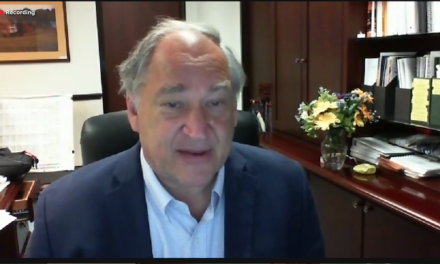By Len Lazarick
Consultants are recommending that Maryland spend $2.9 billion more on public schools each year, a 29% overall increase. The state share would increase by $1.9 billion and the counties would pick up the rest, with some big winners and Montgomery County the biggest loser in the reallocation of school dollars.
The commission that will actually make recommendations to the legislature next year about school funding got its first bite at a thick consulting report justifying the increased spending on Thursday, with members questioning the two-year study and its approach.
“What I don’t see is the return on investment,” said Sen. Steve Waugh, R-St. Mary’s, one of the eight legislators on the Commission on Innovation and Excellence in Education. “What are we going to get for it?”
Waugh wanted to know if low performing schools would see test scores rise with the massive infusion of funds.
“I don’t find that in the report,” he said. “All I see is that you want to spend $3 billion.”
Mark Fermanich of Augenblick, Palaich and Associates Consulting, said, “I don’t think we can guarantee that you’ll have higher results.”
Others, like David Steiner, director of the Institute for Education Policy at Johns Hopkins University, said studies had shown “no correlation” between how much is spent on schools with high concentrations of poor students and the results they achieve.
Spending on students in poverty
Del. Maggie McIntosh, a Baltimore City Democrat who chairs the House Appropriations Committee and serves on the commission, wondered if there was some “tipping point” for results at schools where a majority of students live in extreme poverty. “There’s a price tag” to helping those students achieve, McIntosh said, wondering if those schools needed more school days.
The consultants had spent more than two years studying the components of what it takes to create successful schools and what those components cost. They also made recommendations for more services and extra time for teacher preparation and collaboration.
One of their recommendations includes universal pre-kindergarten available to all four-year-olds on a voluntary basis. They also recommended ideal maximum school sizes, and would set enrollment limits at 700 students for elementary schools, 900 for middle schools and 1,700 students for high schools.
New funding formulas
All their calculations and studies lead to new funding formulas that could lead to major increases in aid for many school systems. The biggest winners were Baltimore City, with a 45% boost in state aid, and Prince George’s County, with a 72% increase, but many other counties would get substantial increases in funding.
Under the consultants plan, Montgomery County would see a $354 million drop in state aid, a 63% reduction, along with a recommendation that Mongtomery County taxpayers put an additional $842 million in local funds into the schools, a 60% increase.
“That would be devastating,” said Montgomery County Council member Craig Rice, who serves on the commission. He noted that while the county had significant pockets of poverty and many immigrant students, it also had some of the highest performing schools in the state despite those factors.
A huge infusion of local dollars is “impossible,” Rice said.
Montgomery County state Sen. Richard Madaleno, another commission member and chair of the education budget subcommittee, said the the consultant’s report was just a starting point for discussion.
“I find it very hard to believe that the commission will do anything like what is proposed for any jurisdiction,” Madaleno.
Beside the loss in aid to Montgomery, the recommendations also include a complete cut of state education aid to Kent, Talbot and Worcester counties on the Eastern Shore.
Besides the dollars themselves and how they are allocated, the commission is also looking at broader education issues on how the money is spent on students and teachers.




Given the millions, and perhaps billions, already spent on education… And the rather poor results…
More money isn’t the cure…
What are the expectations of better performance by our public schools after this $2.9 billion has dropped from the skies? Given that increased funding for education has not appreciably changed the indicators for success in Baltimore City schools, will throwing more funding at them achieve better results? Perhaps the additional funding, after it miraculously appears, should be diverted to health and human services agencies where poverty and economic disadvantage, which are linked to poor student performance, might have a greater impact.